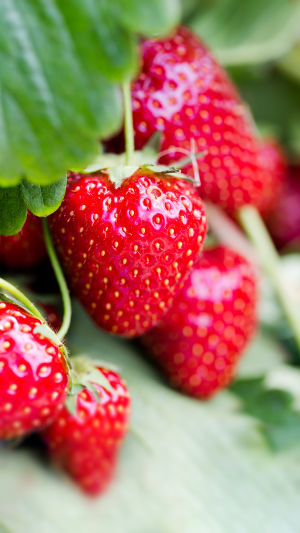Strawberries, with their sweet taste and distinctive appearance, stand out as one of the most beloved fruits of summer.
Yet, unlike many other fruits, strawberries bear their seeds exposed on the surface, raising questions about the evolutionary rationale behind this intriguing feature.
To comprehend why strawberries are structured the way they are, it is essential to delve into their anatomy. Despite common misconceptions labeling strawberries as berries, they are actually "false fruits."
The natural fruit of a strawberry consists of the small, scattered pieces adorning its surface, with the so-called "seeds" being these tiny structures. What we perceive as the fruit's surface is, in fact, the ovary wall of the strawberry.
Hence, the "seeds" adorning the surface of strawberries are not true seeds but rather small structures known as "achenes," which encase the actual seeds.
The exposure of these "achenes" on the outer surface of the fruit pulp serves various purposes, deeply intertwined with the propagation methods and ecological adaptations of strawberries.
The knobs on strawberries are adorned with tiny protrusions, a feature crucial in evolutionary terms. Firstly, these protrusions aid in moisture resistance, reducing fruit decay risk.
Secondly, they facilitate the attachment of the fruit to the fur of birds or other animals, thus enabling the dispersal of seeds to new locations. This mode of dispersal, termed epizoochory, plays a pivotal role in the ecological dynamics of strawberries, enhancing their survival and distribution.
Furthermore, the exposed "seeds" on the surface of strawberries serve a protective function for the seeds. Although the superficial appearance of strawberry "seeds" might suggest vulnerability, they are remarkably resilient.
This resilience stems from the evolutionary development of the strawberry "achenes" into robust and durable structures, effectively shielding the seeds from external environmental pressures. In contrast, enclosing the seeds within the pulp might render them more susceptible to stress or damage.
Beyond biological factors, historical and cultural influences have also shaped the morphology of strawberries. In human cultivation, preferences have inclined towards more extensive, vibrant, and juicier strawberry varieties.
This selection pressure likely contributed to the prominence of "seeds" on the surface of strawberries, as these characteristics are more appealing and palatable to humans.
In summary, the exposed "seeds" on the surface of strawberries are a testament to their unique evolutionary design and ecological adaptation.
This design facilitates the spread and survival of strawberries in their natural habitat and offers a distinctive and flavorful fruit experience for humans.
While the appearance of these "seeds" may seem peculiar, they add to the allure of strawberries, contributing to their appeal as a quintessential summer fruit.





